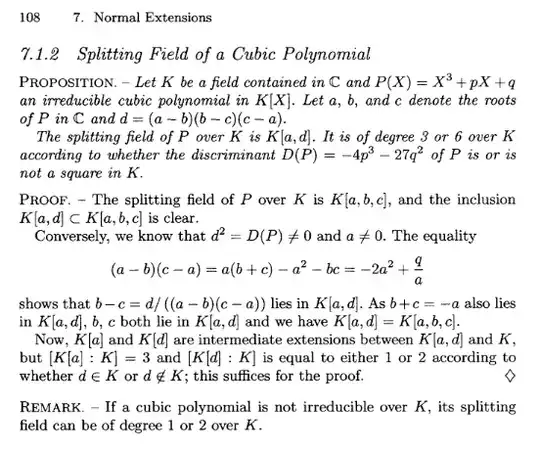We have that $E=\mathbb{Q}(a)$, where $a\in \mathbb{C}$ is a root of the irreducible polynomial $x^3-3x-1\in \mathbb{Q}[x]$.
I want to show that $E/\mathbb{Q}$ is normal.
I have done the following:
Let $b\in E$. A basis of the extension is $1, a, a^2$. So, $b$ can be written as $$b=q_0+q_1a+q_2a^2$$
We have to find the minimal irreducible polynomial of $b$ over $\mathbb{Q}$ and compute the other roots to check if they are in $E$, or not?
Since $[E:\mathbb{Q}]=3$, we have that $\deg m(b,\mathbb{Q})\leq 3$.
So, the general form of that polynomial is $Ax^3+Bx^2+Cx+D$.
So, do we have to replace $x$ with $b=q_0+q_1a+q_2a^2$, compute that polynomial, knowing that $a^3=3a+1$, and find the other roots?
Or is there an other way to show that?
